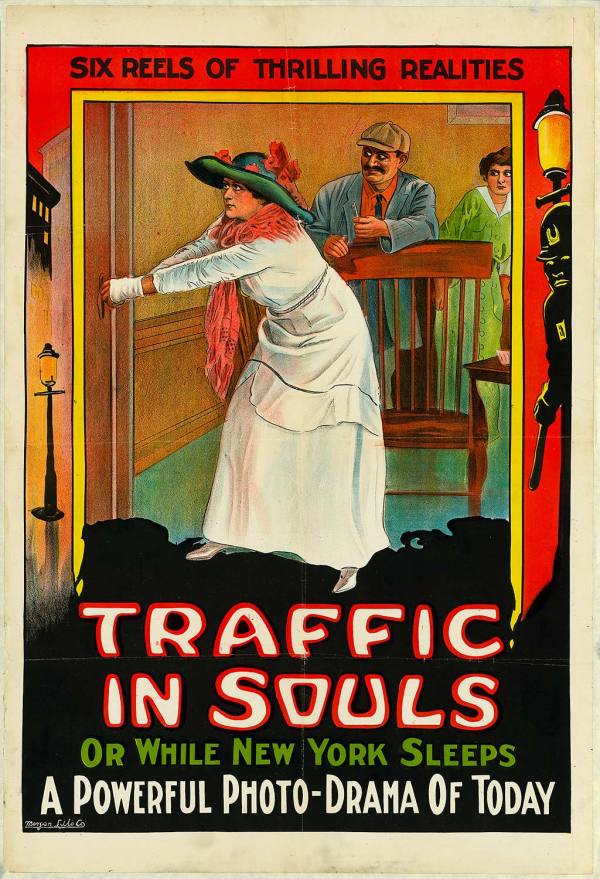TRAFFIC IN SOULS (1913, directed by George Loane Tucker, 88 minutes, U.S.)
WILD ORANGES (1924, directed by King Vidor, 88 minutes, U.S.)
BY DAN BUSKIRK FILM CRITIC Dr. McElhinney’s year-long survey of silent films continues with a silent double-bill featuring damsels in distress. First up, 1913’s lurid drama Traffic in Souls, in which a desperate woman recruits her policeman boyfriend to investigate her younger sister’s kidnapping by white slavers. Made two years before Birth of the Nation, there is no denying that Traffic is primitive cinema, with its camera staying nailed to the floor in long shots for the most part. It seems natural that the acting would be broader, with the camera still not evolved to an expressive instrument, the burden of conveying the drama falls strongly on the actors shoulders. Despite the stationary camera, the film has story structure down pat: the cast is introduced at the opening, a mid-film action scene raises the stakes and the climactic showdown includes wiretapping (recorded on Edison wax cylinders!) and a final confrontation with the wealthy socialites who bankrolled these crimes. Traffic In Souls is an early effort of Universal Studios, back when the industry was centered in Fort Lee, New Jersey, close to where Thomas Edison perfected the technology.
Wild Oranges was made 11 years later but by then cinema had evolved by leaps and bounds. In the hands of directing great King Vidor the camera still moves infrequently but his fluid visual vocabulary of medium, long, and close-up shots would remain the contemporary language of film into at least the 1950s. Wild Oranges follows a tragically widowed man (Frank Mayo) who drowns his sorrow alone at sea. One day the widower docks on the swampy coasts of Georgia where an old man and his beautiful young granddaughter (Virginia Valli) live isolated in a decaying mansion. Interfering with the expected romance is the child-like, swamp-dwelling brute Nicolas (Charles A. Post) who has his own designs for the granddaughter. One gloriously creepy scene has the lovelorn Nicolas forcing the terrified granddaughter to balance on a swampy stump with gators snapping at her feet, all because she won’t give him a little kiss. Murder and madness finally descends on the scenario, with a surprisingly brutal epic brawl closing the show.
King Vidor directed from 1913 until 1980, with the silent classics The Crowd and The Big Parade among his accomplishments, as well as the sexually torrid western Duel in the Sun, the Ayn Rand adaptation The Fountainhead and even the Kansas scenes in The Wizard of Oz (although he was uncredited). Wild Oranges isn’t often mentioned among his classics (the film was missing almost 20 minutes until recently) but it is another fine example of his storytelling, showing passionate common folks drawn into violent conflict by the irresistible lure of love.

